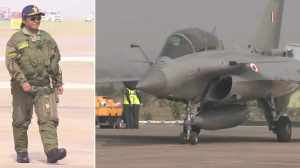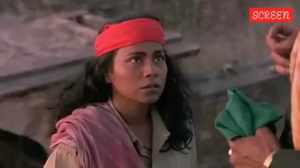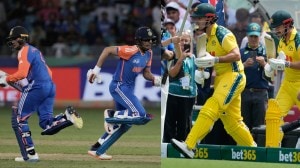Grant puts NAB’s vision within its sights
OCTOBER 15: After a tumultuous 50-year struggle of surviving meagre grants and low quality print, the National Association for the Blind (...

OCTOBER 15: After a tumultuous 50-year struggle of surviving meagre grants and low quality print, the National Association for the Blind (NAB) has finally crossed the hurdle. A handsome Rs 10 lakh grant from corporate body, Amway, will help them with the quota of 14,000 braille textbooks it prints annually. The sponsored project — launched in conjuntion with World Sight Day on October 12 — is valid for a period of one year for each state, beginning this year with Maharashtra. Apart from this, the money will also help the organisation counter problems of resources and manpower.
Though NAB is regarded as the largest producer of braille print, the lacunae in the system is evident. With a fine toothcomb, Ketan Kothari, Manager at NAB, examines the progress and the elements that hinder its growth in the country, Mumbai in particular: “In 1958, the Shah brothers — with their first braille press in Bombay, in a garage in Jogeshwari — triggered off a chain of developments. Soon after America donated machinery to NAB with the help of the Tata Press.” Incidentally, the first braille magazine, Deepak, was handwritten by a founder member, Dr R T Vyas, who played an integral role in creating a standardised code for braille in the country through UNESCO.
Coupled with braille education came technology, as Japan and Germany lavishly bestowed printing equipment on NAB. Today, computerised printing helps churn out more than 14,000 volumes as part of its annual production — including textbooks and magazines like science periodical Vidyan Bharati and women’s magazine Vishwa Darshan. With government support covering only one-eighth of production costs, Amway’s donation will go a long way to help the visually challenged. However, with paper cost amounting to Rs 5-6 lakhs annually, greater support is required. And even as the tussle between production and costs ensue, Kothari appeals to corporates and philanthropists, stressing on the need for financial grants to enhance the literacy rate among the blind.
“There is a growing number of educated blind who can’t comprehend the semantics of braille. Besides literacy, NAB urges students to join the integrated education programme where they study in a normal school atmosphere,” reveals Kothari. “It is crucial for a visually challenged person to interact with others of his or her age so as not to be left out of the social milieu,” Dr Vyas emphasises.
Nevertheless, ardent support is given to blind institutes such as the Dadar Kamla Mehta Girls School, Happy Home and V M schools for the blind, though government sponsorship is received from the National Institute for the Visually Handicapped (NIVH) in Dehradun. Moreover, teachers receive rigorous training where they learn to read and write braille, imparting the learning on their students.
Books at NAB are printed in five languages – Marathi, Hindi, Gujarati, English and Sanskrit. The printing process involves imprinting metal sheets which are fed into printers, after which 3,000 to 4,000 copies are printed. Dr Vyas laments that the procedure is cumbersome as a 200 page textbook implies a reproduction of 600 pages in braille, keeping in mind the additional cost of 75 paise per page.
Ramakrishnan, General Manager of IDBI bank sheds the seeds of pessimism by positively declaring that `a great deal has been accomplished’. And as NAB caters to the 90 schools across Maharashtra and the villages hidden in the country’s interiors, Kothari ends by confirming the fact that “the only way a blind person will catch the eye is by being better than the rest.”





- 01
- 02
- 03
- 04
- 05


























